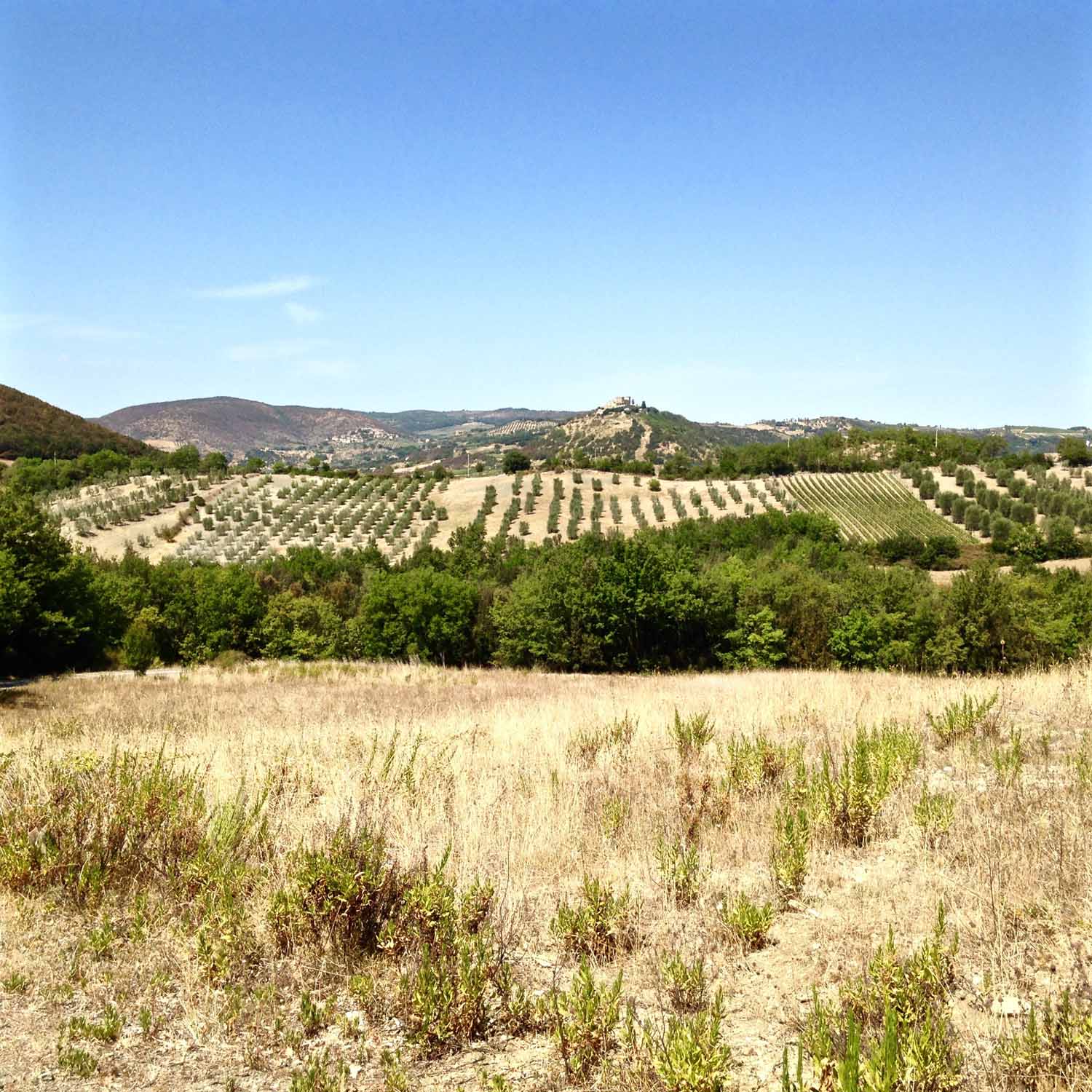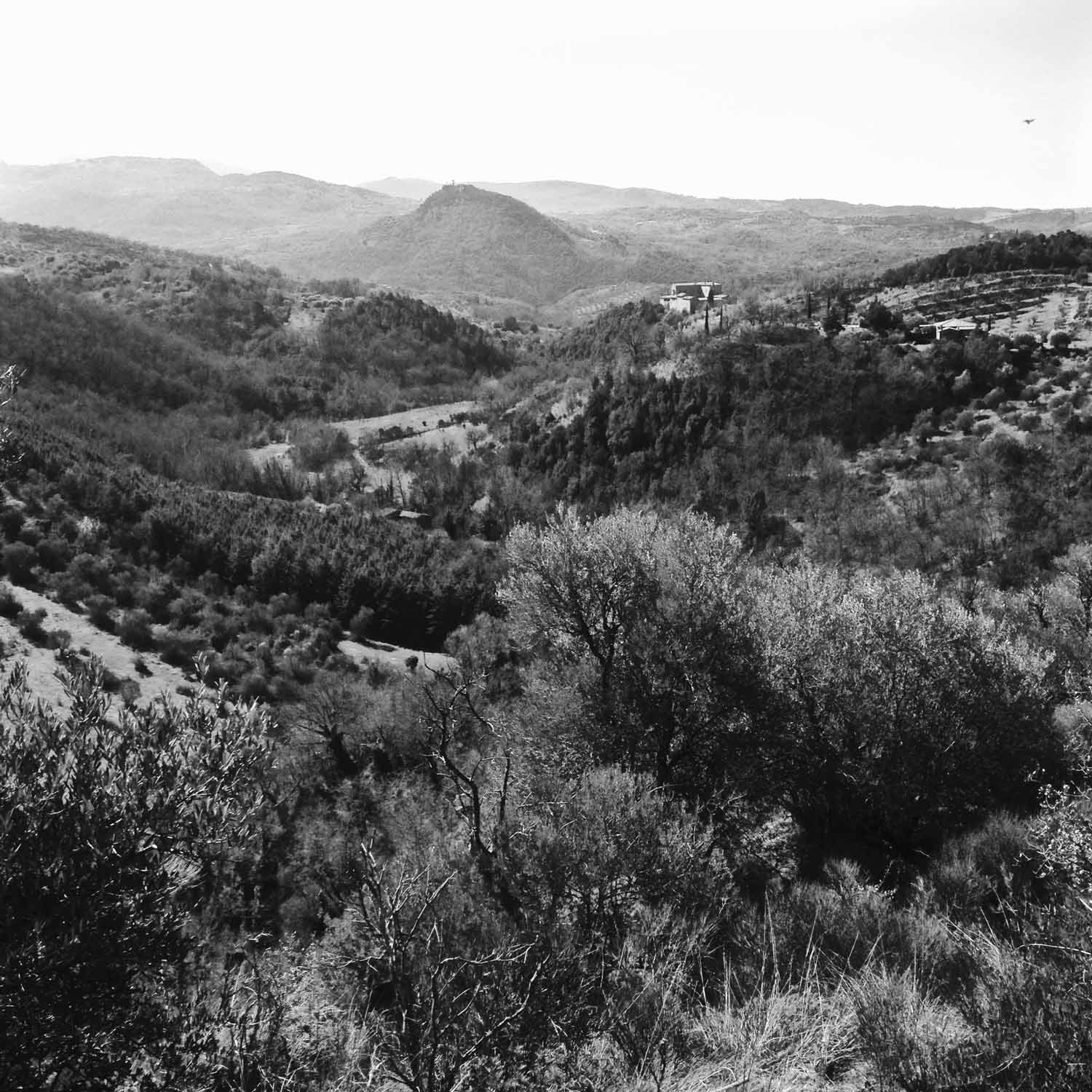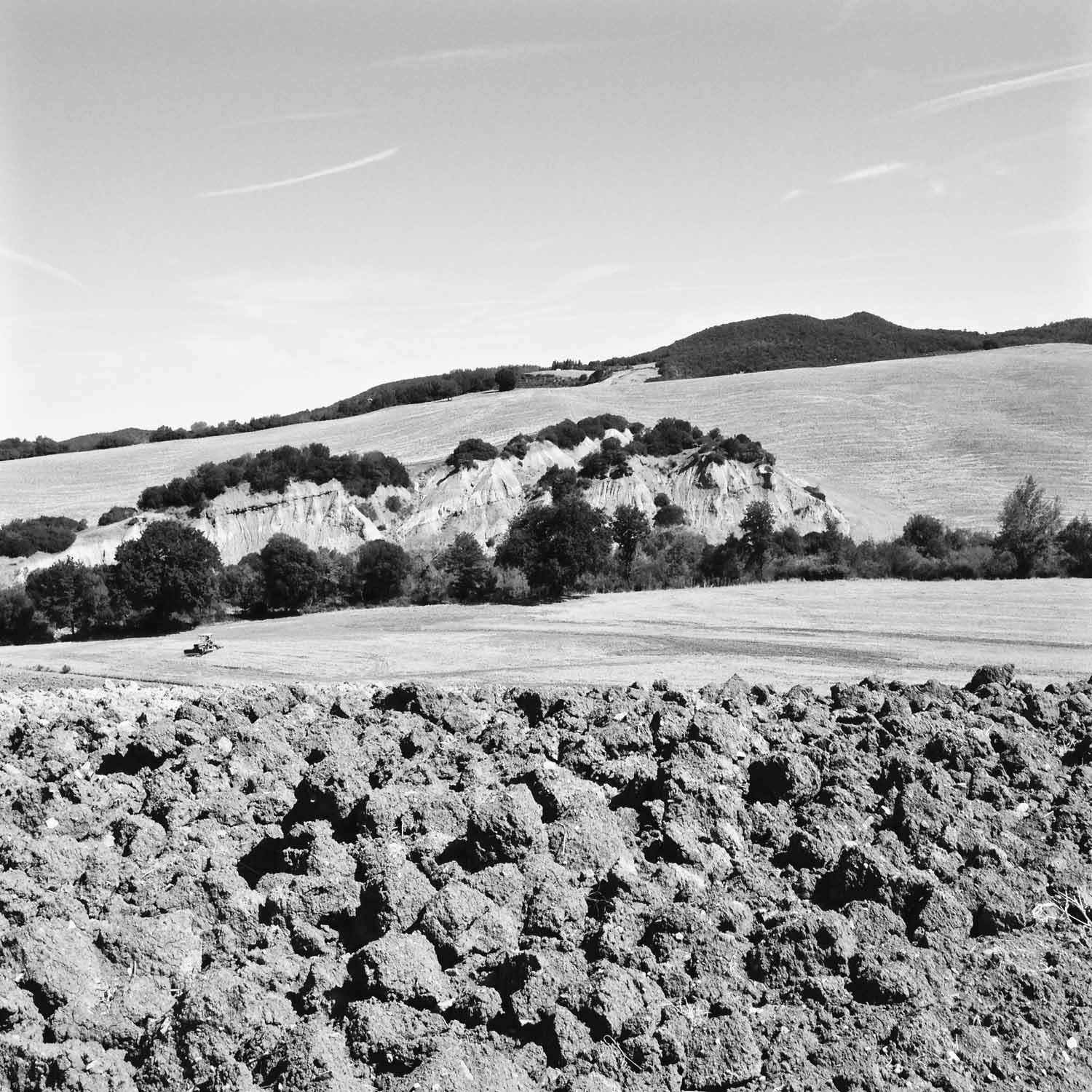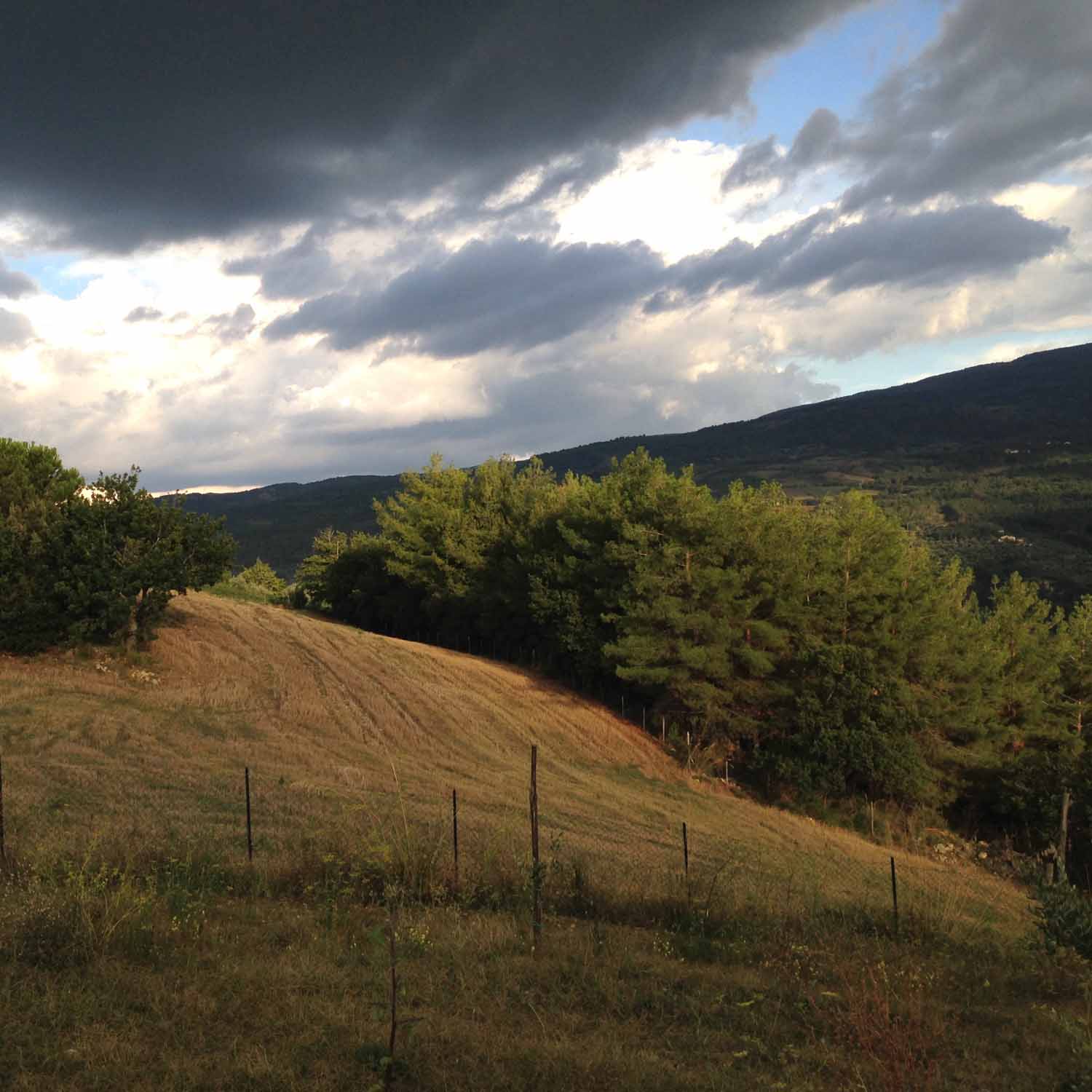The Mountain In-between
[Day 2]
by Rudston Steward
hen you walk to the top of the Monte Amiata there are no proper paths through the beech woods, you take a bearing and navigate by compass. One compass is not enough; there’s so much metal underground that the needle gets drawn off course in places. I bring a second compass—to keep tabs on the first, check for deviance, autocorrect. So maybe it boils down to this basic geological fact—magnetism. The mountain draws us nearer, irresistibly.
Or perhaps the underlying cause is geographical, totemic: the volcanic cone of the Amiata rises from the plains of southern Tuscany like an igneous altarpiece, drawing the eye up to the heavens. Those of us that live around here can’t help but gaze upon its slopes with reverence and restlessness—the way baby swallows size up the sky from their nests just before launching into first flight.
Or maybe it’s the fact that the Monte Amiata has always been liminal terrain, an in-between place. Between Tuscany and Lazio; between the Republic of Siena to the north and the Papal States to the south; between the Appenines to the east and the Tyrrhenian Sea to the west; between the city-states of Etruria and the expanding Roman Empire; between the Val d’Orcia and the Maremma; between earth and sky.
In-between places are often magical; liminal space is fertile ground. Interesting things happen on the periphery, across borders, beyond the threshold, on the edge—where the neat boundaries that delimit experience fade and merge. Beyond the sway of business-as-usual, where rules and habits and prejudices release their clear-cut grip on our daily lives.
Whatever the reason, the Monte Amiata lodges itself firmly in your imagination, deeply under your skin. Around here you are constantly aware of its hulking presence—a subconscious geological hum that slowly but steadily insinuates itself into the core of your being. The mountain’s telluric pulse keeps snagging your peripheral vision, embedding itself on your horizon.
A SUBCONSCIOUS GEOLOGICAL HUM THAT SLOWLY BUT STEADILY INSINUATES ITSELF INTO THE CORE OF YOUR BEING
The Monte Amiata Safari pays homage to the mountain: a 5-day hike around its base, over its ridges, along its valleys and streams, traversing its flanks. As you walk you are constantly aware, day by day, of the volcanic peak—our point of reference, measuring stick, gauge of distance. The mountain is a cosmic lightning rod granting us safe passage as we complete our Monte Amiata pilgrimage on foot.
Day 2 of the walk follows a symbolic trajectory: from Bagno Vignoni we turn our backs on the Val d’Orcia and head in the opposite direction, up and away through forests and fields. Into the bosom of the mountain near Seggiano.
To be sure, first we take a good long soak in the thermal hot springs—no better way to kickstart a walking trip in Tuscany than floating awhile in the region’s abundant curative waters. Bagno Vignoni is a rite of passage: untold hordes of Etruscans and Romans and Lombards and Franks, great unwashed masses of medieval pilgrims on the Via Francigena, assorted megalomaniac Medici princes in the Renaissance, the venerable Saint Catherine of Siena and not-so-pious Pope Pius Piccolomini, the glitterati of the 18th Century Grand European Tour; all paid their sulphurous dues here before continuing on their merry way.
In trademark Maremma Safari Club fashion, from overcrowded Bagno Vignoni we do an about turn and head off into the hills, along a path that no-one else seems to know about or ever follow. The great green mass of the Amiata, its sinuous volcanic silhouette, starts off a distant line drawing, an arabesque hovering above Castiglione d’Orcia. Over the course of the day’s 20km walk it gets progressively closer, flatter, fatter, greener, meaner, leaner—constantly fading in and out of view, appearing and disappearing behind clay hillocks, over rises and under clouds, between stands of chestnuts and pine and oak.
At the end of the day you crest a rise and the view opens up abruptly. As if the Amiata has somehow crept up on you from behind Poggioferro, shrouded in an ethereal late-afternoon glow. The slopes tower in steep diagonals, a soaring superstructure, its valleys crumpling and folding uphill—acutely foreshortened and impressive.
You can no longer see the Monte Amiata, for you have walked your way right into it. Here you are not on the mountain, but of it.











